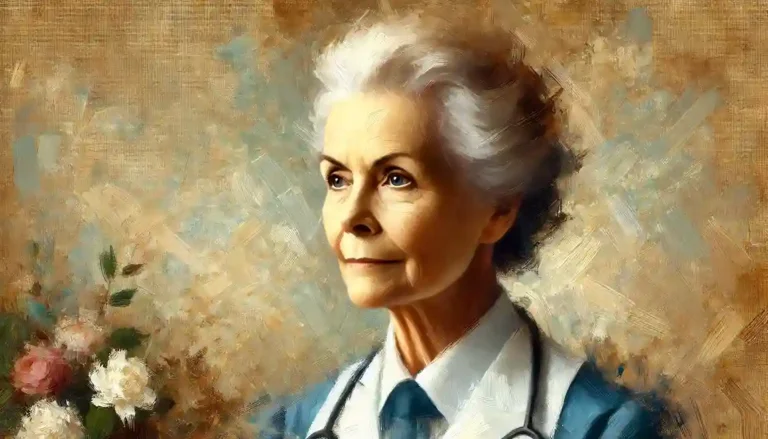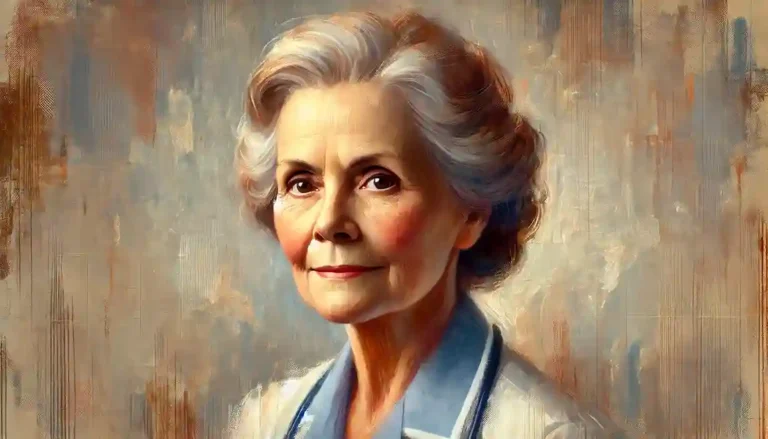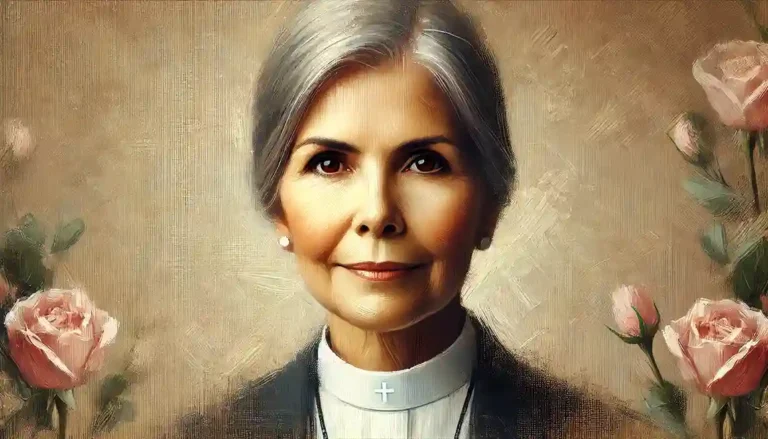Sister Callista Roy, an influential nurse theorist and educator, is best known for developing the Adaptation Model of Nursing.
Her groundbreaking theory emphasizes how individuals adapt to changes in their environment and how nurses can facilitate this adaptation to promote health and well-being.
With her innovative approach, Roy transformed nursing practice, education, and research by focusing on patients’ holistic responses to stimuli.
In this article, we cover Sister Callista Roy’s life, achievements, philosophy, and lasting impact on modern nursing.
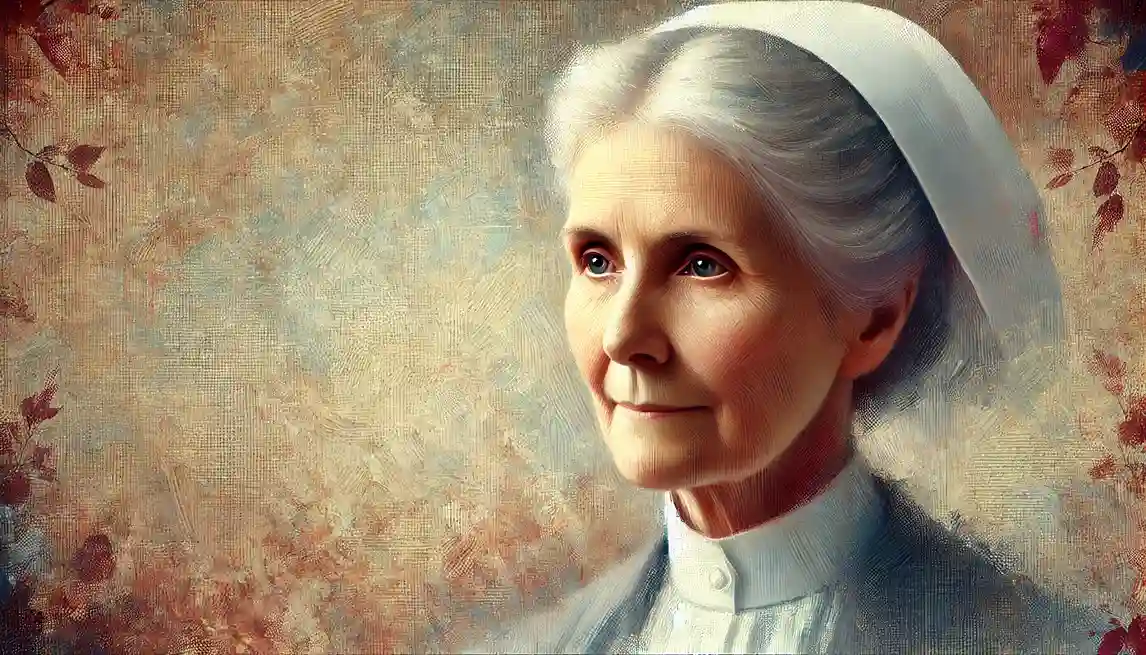
Quick Summary
- Developed the Adaptation Model of Nursing, which focuses on patients’ adaptation to environmental stimuli.
- Emphasized the role of nurses in promoting positive adaptive responses to enhance health.
- Authored numerous influential publications on nursing theory and practice.
- Advocated for holistic nursing, considering physical, psychological, and social dimensions of patient care.
- Recognized globally for her contributions to advancing nursing theory and research.
Early Life and Background of Sister Callista Roy
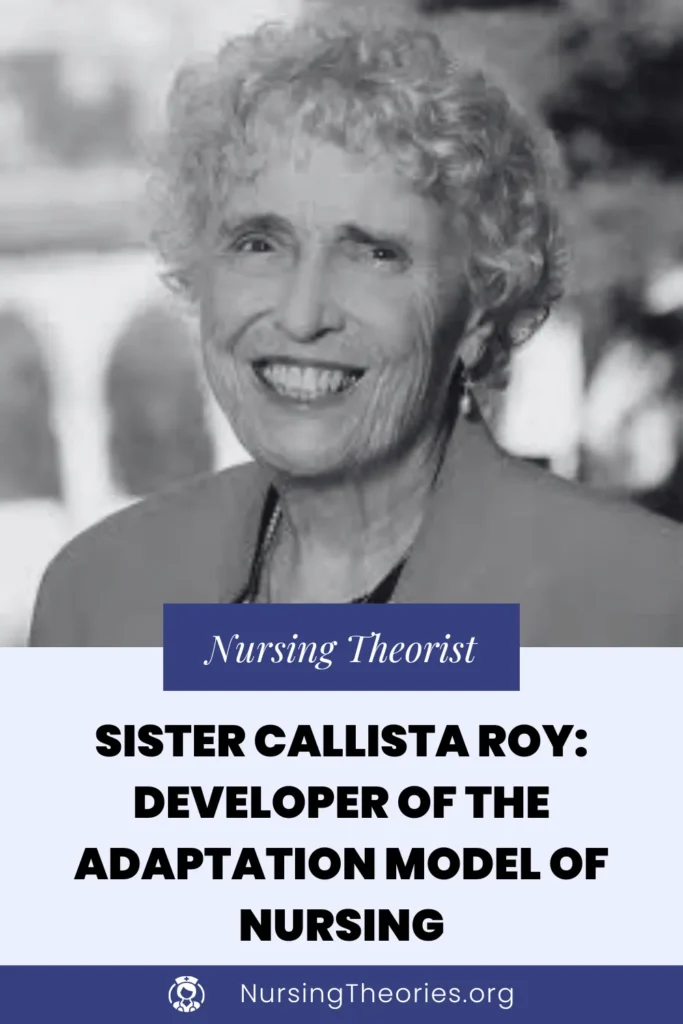
Birth and Family Background of Sister Callista Roy
- Sister Callista Roy was born on October 14, 1939, in Los Angeles, California, Sister Callista Roy grew up in a supportive Catholic family that valued education and service.
- Her upbringing instilled in her a strong sense of compassion and dedication to helping others, which would later shape her nursing career.
Education and Early Influences in Roy’s Life
- Roy attended Mount St. Mary’s College, where she earned her bachelor’s degree in nursing in 1963.
- During her early nursing studies, she was deeply influenced by Sister Marie Simone Roach, who encouraged her interest in nursing theory development.
- Later, she pursued her master’s degree in pediatric nursing and a doctorate in sociology, both of which significantly influenced her holistic approach to patient care.
Sister Callista Roy’s Philosophy and Vision for Nursing
- Roy believed that the primary role of nursing is to promote patient adaptation, helping individuals respond effectively to environmental stimuli.
- Her vision integrates a holistic understanding of patients’ physical, psychological, and social needs, emphasizing that health is a dynamic state of adaptation.
- Famous quote: “The goal of nursing is to promote adaptation for individuals and groups in four adaptive modes—physiological-physical, self-concept, role function, and interdependence.”
Sister Callista Roy’s Education and Early Nursing Career
Formal Education and Nursing Training of Sister Callista Roy
- After completing her bachelor’s degree, Roy furthered her education with a master’s degree in pediatric nursing from the University of California, Los Angeles (UCLA) in 1966.
- She earned her doctorate in sociology in 1977, allowing her to blend sociological principles with nursing practice and theory development.
Early Professional Experiences in Roy’s Career
- Roy began her career as a pediatric nurse, where she observed how children adapted to illness and hospitalization, sparking her interest in human adaptation.
- Her experiences in clinical practice, combined with her academic background, laid the groundwork for the development of the Adaptation Model of Nursing.
Key Achievements and Contributions of Sister Callista Roy
Development of the Adaptation Model of Nursing
- Roy’s Adaptation Model of Nursing posits that humans are adaptive systems who respond to environmental stimuli through biological, psychological, and social mechanisms.
- The model outlines four adaptive modes:
- Physiological-Physical Mode: Addresses the body’s physical responses to stimuli.
- Self-Concept Mode: Involves the psychological and emotional aspects of adaptation.
- Role Function Mode: Focuses on societal roles and expectations.
- Interdependence Mode: Relates to social relationships and support systems.
- Her model guides nurses in assessing patients’ adaptive responses and intervening to promote positive outcomes.
Contributions to Nursing Education and Curriculum Development
- Roy incorporated her adaptation model into nursing curricula, enabling nursing students to understand the holistic nature of patient care.
- She authored several textbooks and teaching materials that continue to be widely used in nursing education programs worldwide.
Research and Theoretical Advancements
- Through her extensive research, Roy explored various applications of the adaptation model in different healthcare settings, including acute care, mental health, and community health.
- Her work bridged the gap between theory and practice, ensuring that her model could be applied in real-world clinical scenarios.
Global Impact and Recognition
- Roy’s model has been adopted internationally, influencing nursing practice and research in numerous countries.
- She has received multiple awards and honorary doctorates in recognition of her contributions to nursing theory and education.
Overview of Sister Callista Roy’s Adaptation Model of Nursing
- The Adaptation Model of Nursing focuses on assessing and facilitating patients’ adaptive responses to environmental stimuli to promote health and well-being.
- Nurses play a vital role in identifying maladaptive responses and implementing interventions to support positive adaptation.
- For a deeper understanding of this theory, check out the in-depth article on the Adaptation Model of Nursing.
Notable Publications by Sister Callista Roy
- Introduction to Nursing: An Adaptation Model – A foundational textbook that introduces the core principles of her adaptation model.
- The Roy Adaptation Model: The Definitive Statement – A comprehensive guide to understanding and applying her model in nursing practice.
- Numerous research articles on adaptation-based nursing interventions and theoretical advancements.
Challenges and Criticisms of Sister Callista Roy’s Work
Challenges in Applying the Adaptation Model in Complex Settings
- Some nurses and educators have found it challenging to apply the model in fast-paced or unpredictable environments, such as emergency rooms.
- Roy addressed these challenges by emphasizing the importance of flexibility and adaptation in nursing assessments and interventions.
Criticisms of the Adaptation Model’s Complexity
- Critics have argued that the model’s comprehensive framework can be complex and time-consuming to implement in daily practice.
- However, proponents argue that its holistic approach leads to improved patient outcomes when applied correctly.
Timeline of Major Milestones in Sister Callista Roy’s Life
- 1939: Born in Los Angeles, California.
- 1963: Earned her bachelor’s degree in nursing from Mount St. Mary’s College.
- 1966: Completed her master’s degree in pediatric nursing from UCLA.
- 1977: Earned her doctorate in sociology.
- 1970s: Developed the Adaptation Model of Nursing.
- 1981: Published Introduction to Nursing: An Adaptation Model.
- 2007: Inducted into the American Academy of Nursing as a Living Legend.
Legacy and Lasting Impact of Sister Callista Roy
Impact on Nursing Practice and Patient Care
- Roy’s adaptation model has improved nursing assessments and interventions by emphasizing individualized, holistic care.
Global Influence and Recognitions
- Her model is used in nursing curricula and healthcare institutions worldwide.
- Roy’s contributions have earned her numerous awards and accolades, including recognition as a Living Legend by the American Academy of Nursing.
Final Years and Ongoing Work
- Sister Callista Roy continues to contribute to nursing theory and research, mentoring students and collaborating with nursing scholars globally.
- Her ongoing work focuses on refining the adaptation model and exploring its applications in emerging healthcare settings.
Key Lessons from Sister Callista Roy for Modern Nursing
- Holistic assessments: Nurses should evaluate patients’ physical, psychological, and social responses to illness.
- Promoting adaptation: Facilitating positive adaptive responses is central to patient recovery.
- Flexibility in care: Adapting nursing interventions based on patients’ changing needs is crucial.
- Theoretical integration: Bridging theory with practice enhances the effectiveness of nursing interventions.
- Continuous learning: Roy’s dedication to research highlights the importance of lifelong learning in nursing.
Conclusion
Sister Callista Roy’s Adaptation Model of Nursing has redefined nursing practice by highlighting the dynamic nature of patient care and the role of nurses in promoting adaptation.
Her work, explored further in the in-depth article on the Adaptation Model of Nursing, remains a cornerstone of nursing education and practice.
Roy’s legacy endures as her model continues to guide nurses in delivering holistic, patient-centered care that addresses the complexities of human health and adaptation.


